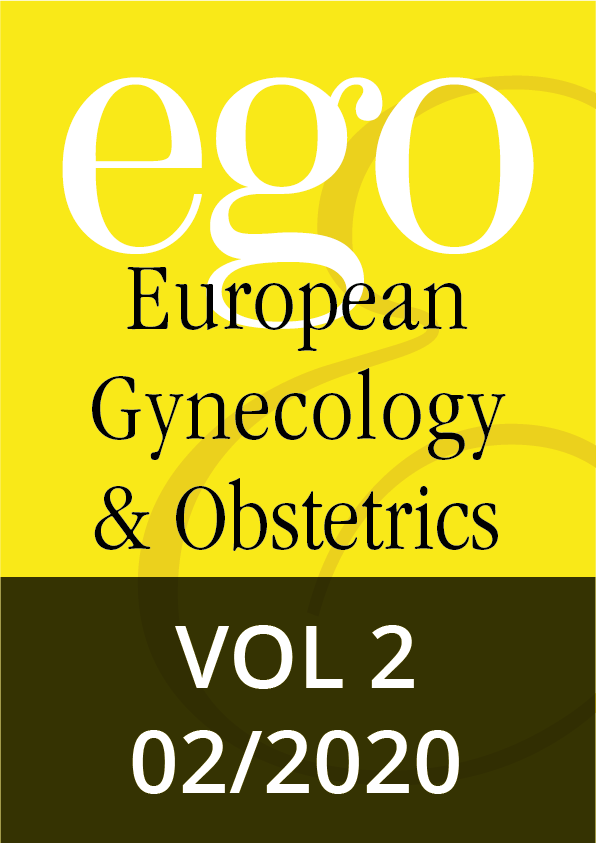Editorial, 03-04 | DOI: 10.53260/EGO.202011
Editorial, 071–072 | DOI: 10.53260/EGO.202021
Short reviews, 073–076 | DOI: 10.53260/EGO.202022
Short reviews, 077–081 | DOI: 10.53260/EGO.202023
Short reviews, 082–089 | DOI: 10.53260/EGO.202024
Short reviews, 090–093 | DOI: 10.53260/EGO.202025
Case reports, 094–097 | DOI: 10.53260/EGO.202026
Case reports, 098–100 | DOI: 10.53260/EGO.202027
Short reviews, 10-15 | DOI: 10.53260/EGO.202013
Case reports, 101–104 | DOI: 10.53260/EGO.202028
Original articles, 105–110 | DOI: 10.53260/EGO.202029
Original articles, 111–115 | DOI: 10.53260/EGO.2020210
Original articles, 116–122 | DOI: 10.53260/EGO.2020211
Original articles, 123–126 | DOI: 10.53260/EGO.2020212
Original articles, 127–131 | DOI: 10.53260/EGO.2020213
Syncytiotrophoblast-derived extracellular products associated with preeclampsia
Abstract
The maternal-embryo-fetal interface is a site of exchange of biochemical and immune information. In a normal pregnancy, the syncytiotrophoblast releases different trophoblastic components including extracellular vesicles (EVs), microparticles (MPs), exosomes, and microRNA. These products exert local changes in the microenvironment and can impair different maternal functions. Placental exosomes can normally be detected in maternal blood from the first trimester of pregnancy and their levels increase until the end of gestation. The development of preeclampsia is partly related to abnormal secretion of these products and thus alteration of normal maternal mechanisms. Syncytiotrophoblastic MPs play an important role in the occurrence of thrombotic complications of pregnancy. Trophoblastic cells also release microRNA encapsulated within EVs or bound to Argonaute proteins, which are then passed onto the maternal circulation where they are highly stable. These proteins are specialized binding molecules that adapt to microRNA and participate in the silencing of genes and also interact with other proteins. Finally, the increased release of trophoblastic products causes alterations that contribute to maternal morbidity (preeclampsia) or the development of diseases in adult life in both the mother and newborn long after pregnancy has ended.
Keywords: Exosomes, extracellular vesicles, hypertension, microparticles, microRNAs, placenta., preeclampsia, syncytiotrophoblast
Citation: R. Pérez-Roncero G.,T. López-Baena M.,R. Pérez-López F.,S. Escobar-Valdivieso G.,Chedraui P.,Hidalgo L., Syncytiotrophoblast-derived extracellular products associated with preeclampsia, EGO European Gynecology and Obstetrics (2020); 2020/02:090–093 doi: 10.53260/EGO.202025
Published: April 1, 2020
ISSUE 2020/02

Editorial, 03-04 | DOI: 10.53260/EGO.202011
Editorial, 071–072 | DOI: 10.53260/EGO.202021
Short reviews, 073–076 | DOI: 10.53260/EGO.202022
Short reviews, 077–081 | DOI: 10.53260/EGO.202023
Short reviews, 082–089 | DOI: 10.53260/EGO.202024
Short reviews, 090–093 | DOI: 10.53260/EGO.202025
Case reports, 094–097 | DOI: 10.53260/EGO.202026
Case reports, 098–100 | DOI: 10.53260/EGO.202027
Short reviews, 10-15 | DOI: 10.53260/EGO.202013
Case reports, 101–104 | DOI: 10.53260/EGO.202028
Original articles, 105–110 | DOI: 10.53260/EGO.202029
Original articles, 111–115 | DOI: 10.53260/EGO.2020210
Original articles, 116–122 | DOI: 10.53260/EGO.2020211
Original articles, 123–126 | DOI: 10.53260/EGO.2020212
Original articles, 127–131 | DOI: 10.53260/EGO.2020213
